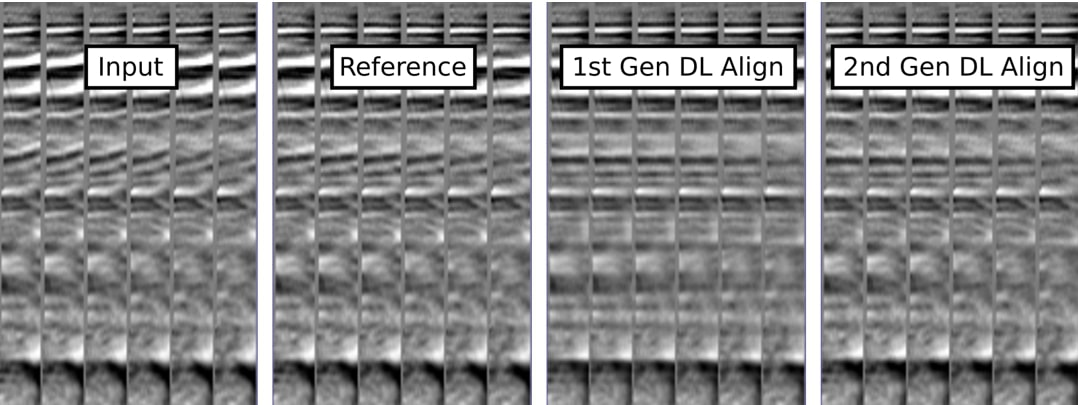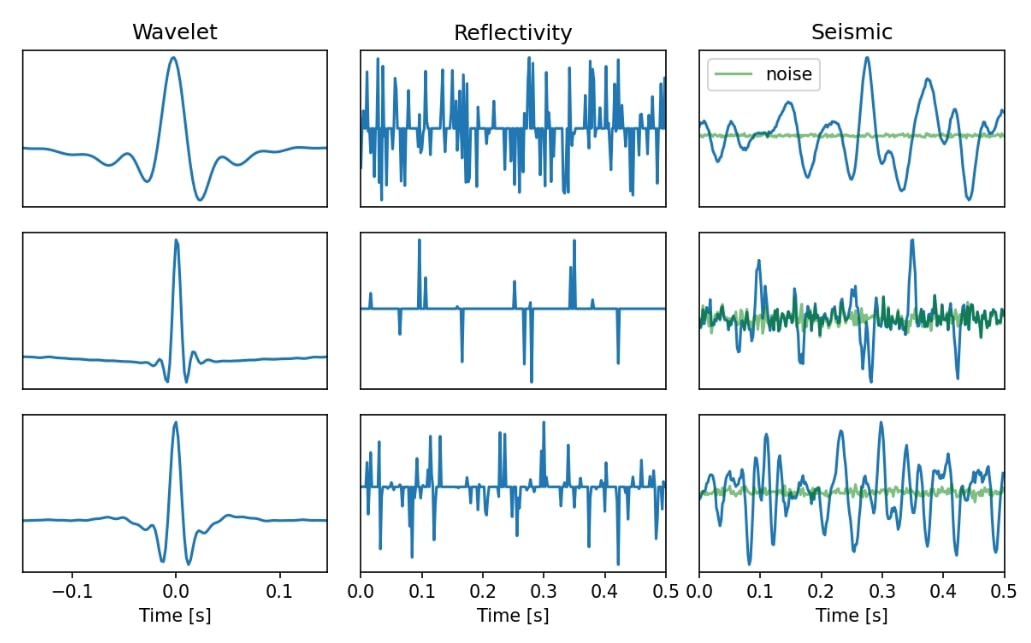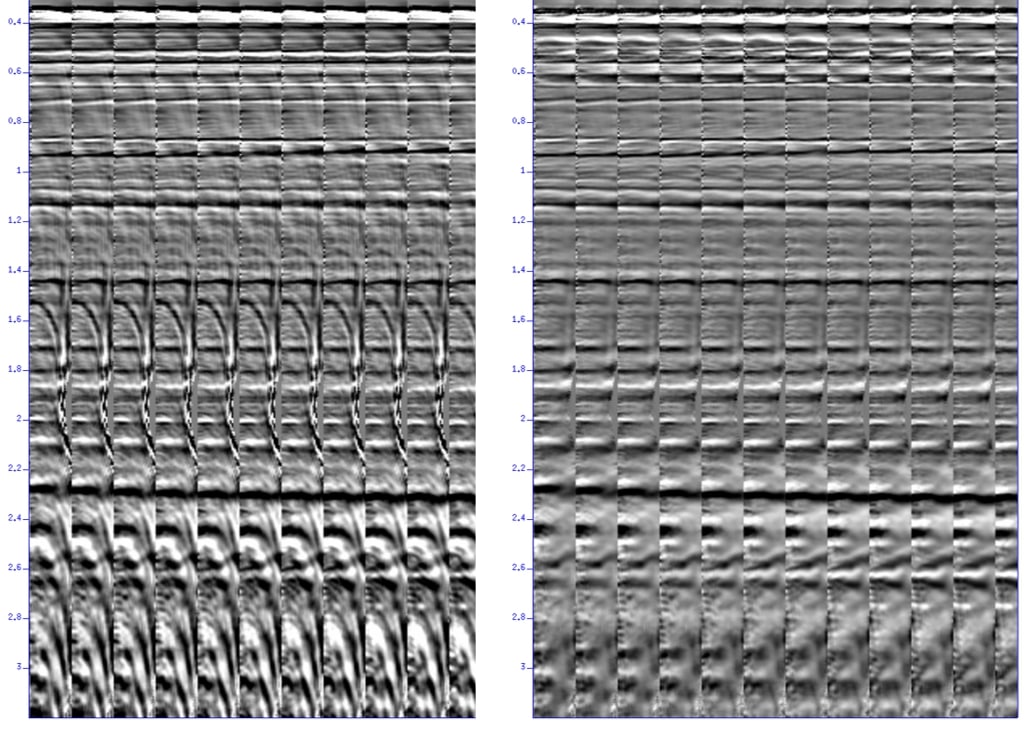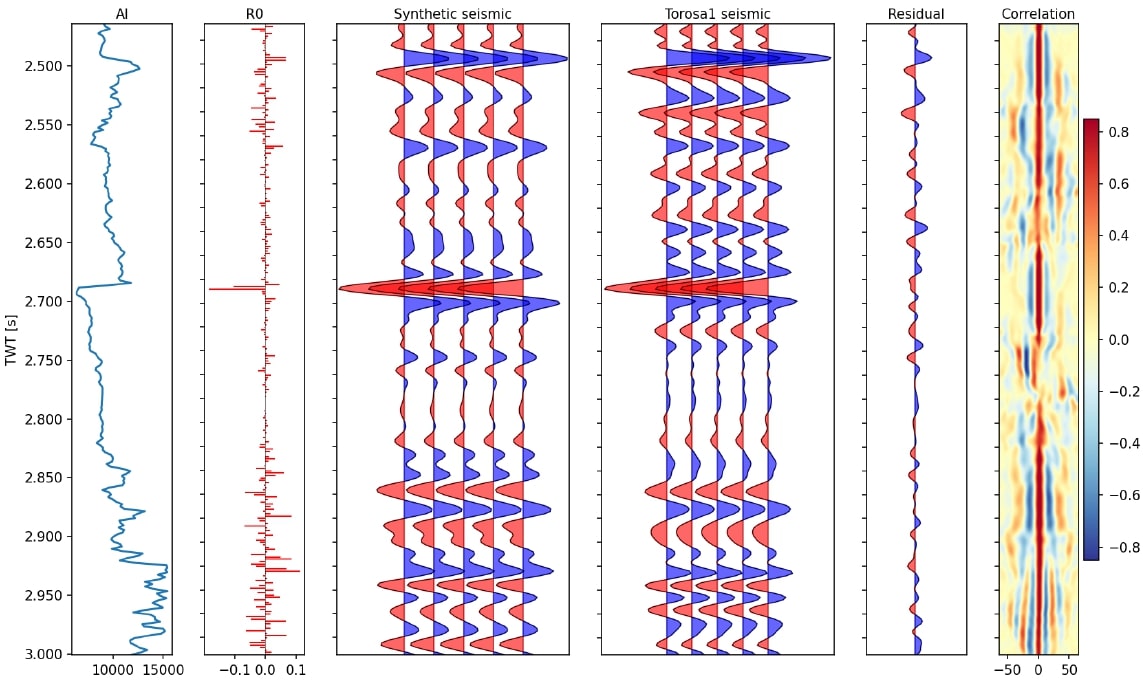With the availability of big data and advances in computing power, Deep Learning (DL) has emerged as a breakthrough technology for many of the most difficult problems in language processing, image processing and computational linguistics. Learned approaches are now superior to traditional ones – whether in accuracy, throughput, or flexibility. Many challenges in the geosciences are based on this very need: to extract scientific knowledge from a rapidly growing amount of available synthetic, observed, and experimental data.
Project DLseis – Deep Learning for Large Scale Seismic Applications
The interdisciplinary project »Deep Learning for Large-Scale Seismic Applications« (DLseis) systematically addresses these challenges. DLseis combines our expertise in seismic, high-performance computing and machine learning (ML) to replace classical implementations of seismic workflow components with ML approaches. We pay special attention to applications that have proven to be time-consuming, error-prone and overly dependent on the subjective judgment of the operators.
- The first phase of DLseis was successfully implemented from 2019 to 2021. See the work packages and some highlights in the Phase 1 section.
- DLseis Phase 2 is currently underway. See the section »Phase 2« for information.
The research content of the first phase was divided into three thematic blocks:
- Basic research on Deep Learning methods
- Advanced training and education
- Seismic applications: Ready-to-use software for production
First Phase Completed
Basics: Application-Oriented Research
We reported on developments in:
- Scalable training of large DL models on HPC compute clusters. For seismic applications, models must be trained using very large prestack datasets. Current deep learning software does not allow the level of parallelization required for this. Therefore, we have placed a focus of our research on scalable DL framework software → Products: Tarantella, Carme
- Optimal network design through automated parameter search → DeTol.
- Investigations on the transfer of GANs in their property of matching data sets for seismic applications → Publications on boulder/diffraction detection and horizon interpretation.
Education and Training
One of the biggest challenges in Deep Learning is keeping up with the speed of developments. Hundreds of new research results are published every day. We have therefore set up an information system for the consortium in which interesting publications and results are compiled and commented on. In addition, workshops for consortium members were held twice a year (locations: Houston and Berlin).
Seismic Applications: Deployable Deep Learning Tools
A collection of challenging key applications in seismic data processing translates our fundamental research to ready-to-use tools. We have worked on the following topics:
- Auto-mute: muting seismic gathers for optimal stacking and deletion of irrelevant amplitude information. In addition: development of a tool for labeling datasets and an active maintained system for continued training of networks as new training datasets are added.
- Detection of geological faults. To do this: develop a synthetic modeling tool for generating seismic migration results in the presence of faults. Visualization of the gradient term for network analysis and thus improved network design.

- Dip-filter for stacks and offset-plane data; installation of protection to preserve reflections fault plane.
- Study of the AVO potential of a data set using ML clustering techniques.
- ML align and ML demultiple for gathers in an image-to-image mode; development of the dual-use concept for reusing network designs when synthetic training data is changed; studies of the prominent role of synthetic datasets in training networks in seismic → game-changer potential for post-migration prestack gathers conditioning (Figures 1 and 2).
- Semi-automatic Well-tie (Figure 3): DNN-based wavelet extraction (Figure 4) embedded in a Bayesian parameter search strategy for time-depth table fitting and well data editing. Minimal user interaction and advantages for short borehole segments.
Successful tools have been integrated into the Aloma auto-parallelization framework. Complex workflows for ML applications of trained DNNs can be designed and executed efficiently with this software. Editing of gathers and stacks can be combined. Large blocks of data can be split, processed separately and combined to produce the final results.

As a communication format between Python driven network design and network training on the one hand – executed on our in-house GPU cluster – and the application to real field data on the other hand, we use ONNX (Open Neural Network Exchange). The tasks of seismic multiple removal and trim statics correction are thus reduced to feeding the data to be processed into the ONNX network trained for the particular application. The desired results are obtained simply by tapping the data from the last network layer. Such data processing is completely parameter-free!
Previous Project Partners and Acknowledgements
The following energy companies supported the first phase of the project. We would like to express our sincere thanks for their financial support, the data sets they provided and their participation in constructive and motivating project meetings.
- ConocoPhillips
- Equinor ASA
- Exxon Mobil Corporation
- Hess Corporation
- MOL-Norge
- Wintershall Dea
Second Phase: DLseis Goes Into the Next Round
This project will be set up as an extension for a period of another two years and aims in particular at applications of Machine Learning where clear advantages can be expected compared to classical executions by ML. We are largely focusing (as in the first phase) on topics that are not already covered by other research groups. The choice of topics is based on the work of the first phase.
Here we successfully occupied the field of Deep Neural Networks (DNNs-) supported image-to-image processing. We observed high quality application results for a variety of seismic datasets – even when the networks had been trained exclusively with purely synthetic data. A key insight here was the level of abstraction for the synthetic datasets, which required feature-based modeling without the need to simulate the real-world appearance of the field data.
Take Advantage of Special Opportunities Offered by the New ML Tools
Gather conditioning tools – such as ML-Demultiple and ML-Align – show clear advantages over classical methods:
- Avoidance of parameters to control the processes
- Independence from the respective domain of the gathers (time-depth, offset angle)
- Significant acceleration of process flows due to obsolete quality control
- Avoidance of typical artifacts of classical results, such as oscillating artificial structures caused by align, or false amplitude removal due to aliased events in Radon-demultiple
The potential of these tools to be highly effective alternatives to classical methods is thus obvious. It is also clear that we can only achieve the required level of robustness and quality by working closely with industry partners. In doing so, we incorporate their data sets and expertise in evaluating the results. Technically, this collaboration was prepared in the first phase by integrating the tools into the execution platform Aloma. Aloma was successfully installed on partners´ hardware and already used on a trial basis.
The tasks and goals for Phase 2 are selected in accordance to the preparatory work of Phase 1 and to the expertise profile of our group. Applications from both, seismic data processing and seismic interpretation, are considered.
The Planned Work Packages Include:
- Gather conditioning extension
- AVO-Inversion
- Use of GANs for seismic applications
- Interpolating seismic data in different sortings
- Study of training with synthetic data compared to training with labeled field data
- Automated Multi-Well Tie
Please contact us in case you are interested and like to receive the project proposal.


